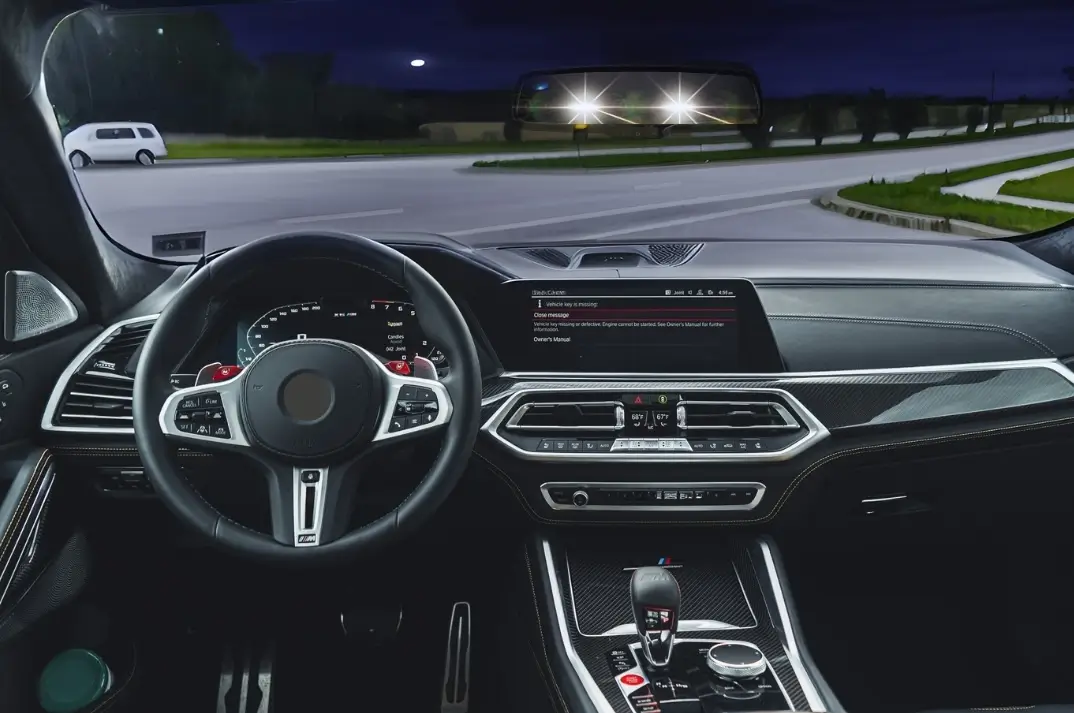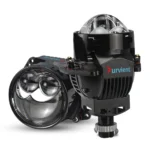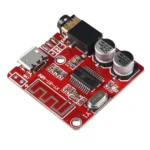Understanding Auto-Dimming Internal Rear View Mirrors (IRVM) and Their Benefits Compared to Anti-Glare and Manual IRVMs

Introduction to Auto-Dimming IRVMs
Auto-Dimming Internal Rear View Mirrors (IRVMs) represent a significant advancement in automotive technology, designed to enhance driving safety and comfort. These sophisticated mirrors are engineered to automatically adjust their reflectivity in response to varying light conditions, thus effectively mitigating the impact of glare from the headlights of vehicles trailing behind, particularly during night-time and low-light driving scenarios.
The primary mechanism behind auto-dimming IRVMs involves electrochromism, where an electrochemical reaction darkens the mirror surface when exposed to intense light. This rapid adjustment drastically reduces the blinding effects of high-beam headlights, allowing the driver to maintain a clear view of traffic behind them without the need for manual intervention. This feature is particularly beneficial when driving on unlit roads or during conditions where headlight glare can significantly reduce visibility and reaction time.
By enhancing visual comfort, auto-dimming IRVMs contribute to safer driving experiences. They minimize distractions and eye strain, which are common issues associated with traditional manual IRVMs and even some anti-glare mirrors. This technological innovation is not just a convenience; it is a crucial element that supports the driver’s ability to focus on the road ahead without frequent adjustments or disruptions.
Auto-dimming technology in IRVMs is becoming increasingly prevalent across various car models and brands, including offerings listed on durvient.com. This widespread adoption underscores the growing recognition of the importance of reducing night-time driving hazards. As more drivers experience the benefits of these advanced mirrors, the shift towards auto-dimming IRVMs becomes more pronounced, setting a new standard for automotive safety and comfort.
History of Auto-Dimming IRVMs
The journey of auto-dimming Internal Rear View Mirrors (IRVMs) began with the advent of basic anti-glare mirrors. The initial solutions to the problem of distracting glare from trailing vehicles’ headlights were rudimentary, typically involving a manual flip tab that allowed drivers to adjust the mirror’s angle. This simple yet effective mechanism laid the groundwork for more advanced technologies.
The 1940s marked the entry of these anti-glare mirrors into the automotive industry. The mechanical lever for glare adjustment remained a staple for decades, but the increasing and ever-evolving demands of drivers spurred further innovation. As automotive technology advanced, so did the need for more sophisticated solutions to ensure safer and more comfortable driving experiences.
The next significant milestone occurred in the late 1980s with the introduction of electrochromic technology. This breakthrough allowed the internal rear view mirror to self-adjust its tint automatically based on the intensity of light hitting its surface. Electrochromic mirrors used a gel or solution sandwiched between two layers of glass that darkened upon the application of a small electrical current, thus reducing the glare effect more dynamically than manual adjustments ever could.
The 1990s and early 21st century saw major automotive manufacturers integrating auto-dimming IRVMs into their premium models, a clear indicator of the technology’s practicality and desirability. Universities and research institutions collaborated with industries to refine the electrochromic materials and processes, enhancing response times, durability, and cost-effectiveness.
Durvient.com and other leaders in automotive innovation continued to invest in research and development, pushing the boundaries of what’s possible with auto-dimming IRVMs. By the 2010s, these mirrors were not only standard in many high-end vehicles but had also become more accessible in mid-range models, driven by improvements in manufacturing techniques and economies of scale.
Today’s auto-dimming IRVMs are a testament to decades of technological advancement. They integrate seamlessly with modern smart systems, contributing to overall driver safety and comfort. Through a combination of sophisticated sensors and refined electro-optical materials, these mirrors have set a new standard for mitigating glare, showcasing the rapid evolution from basic anti-glare mechanisms to the highly responsive and intelligent designs we see today.
Mechanism of Auto-Dimming IRVMs
Auto-dimming internal rear view mirrors (IRVMs), as featured on durvient.com, offer a sophisticated solution to the problem of glare from headlights of trailing vehicles. The core technology behind these mirrors hinges on the use of electrochromic materials, which are substances capable of changing their color or opacity when an electric current is applied. This characteristic allows the mirror to automatically adjust its level of tint in response to varying light conditions.
The basic mechanism involves a thin layer of electrochromic gel sandwiched between two layers of conducting glass. When the sensors detect high-intensity light, such as the glare from a vehicle’s headlights, they send an electric current through the gel. This current causes a chemical reaction that darkens the surface of the mirror, thereby reducing glare and enhancing the driver’s visibility and comfort.
Modern auto-dimming IRVMs typically integrate multiple sensors to optimize performance. Forward-facing photo sensors monitor ambient light levels, while rear-facing sensors detect the intensity and angle of light from behind the vehicle. The data from these sensors enables the mirror to make real-time adjustments to its tint level. This process is usually seamless and occurs within seconds, ensuring that the driver experiences minimal disruption while driving at night.
A pivotal advantage of auto-dimming IRVMs, available at durvient.com, over traditional manual anti-glare mirrors is their automatic functionality. Unlike manually adjustable IRVMs, which require the driver to flip a lever to reduce glare, auto-dimming mirrors offer a hands-free solution, allowing the driver to maintain full attention on the road. Additionally, since the adjustment is automated and continuous, it adapts more precisely to fluctuating light conditions, offering enhanced safety and convenience.
Through the integration of these technological principles, auto-dimming IRVMs represent a significant advancement in automotive mirror technology. They leverage electrochromic materials and advanced sensor systems to provide a safer and more comfortable driving experience, particularly in night-time conditions.
Advantages of Auto-Dimming IRVMs
Auto-dimming internal rear view mirrors, also known as IRVMs, offer a range of benefits that significantly enhance both driving safety and comfort. One of the primary advantages is their ability to enhance safety. When driving at night, headlights from vehicles behind can cause extreme glare, which can temporarily impair a driver’s vision. Auto-dimming IRVMs automatically adjust and reduce this glare, ensuring that your visibility is not compromised. This automatic adjustment is seamless and eliminates the need for manual intervention, allowing you to remain focused on the road.
Another critical benefit of auto-dimming IRVMs is the reduction of driver fatigue. Glare from headlights can be a significant source of strain for drivers, particularly during long nighttime journeys. By minimizing this glare, auto-dimming IRVMs help maintain a more comfortable viewing experience, which can lead to reduced eye strain and less overall fatigue. This translates to a safer driving experience, as a well-rested driver is more alert and less likely to be involved in accidents.
Improved nighttime visibility is another advantage offered by auto-dimming mirrors. These mirrors use sensors to detect the intensity of light coming from behind and adjust accordingly, providing a clearer and more consistent rear view. This ensures that the driver can assess the traffic situation more accurately, leading to better decision-making and reaction times.
Overall, the refined driving experience delivered by auto-dimming IRVMs is noteworthy. By automatically and effectively reducing glare, these mirrors contribute to a more pleasant and less stressful driving environment. Moreover, they conveniently eliminate the need for manual adjustments, which can be both distracting and inconvenient. For more information about the features and benefits of auto-dimming IRVMs, as well as related driving accessories, you can visit durvient.com, a comprehensive resource for contemporary automotive solutions.
Applications and Uses of Auto-Dimming IRVMs
Auto-dimming internal rearview mirrors (IRVMs) have widespread applications across various types of vehicles. Their primary use lies in enhancing driver safety and comfort by automatically adjusting the mirror’s reflectivity to reduce glare from trailing vehicles’ headlights. This feature finds prominent application in passenger cars, where night driving is particularly prevalent. By dynamically dimming in response to light conditions, auto-dimming IRVMs minimize the distraction and discomfort experienced by drivers, thereby contributing to a safer driving environment.
Trucks and SUVs, often used for long-haul routes or off-road conditions, also significantly benefit from auto-dimming IRVMs. Given the varied lighting conditions that these vehicles encounter, auto-dimming mirrors ensure optimal visibility and reduce fatigue, which is paramount for maintaining driver alertness on extended journeys. The technology’s adaptability makes it valuable for different vehicle heights and types, providing consistent performance across diverse settings.
Customization and aftermarket installation options play a substantial role in broadening the accessibility of auto-dimming IRVMs. Vehicle enthusiasts and owners of older models can upgrade their existing mirrors to auto-dimming variants, thus enhancing their vehicle’s safety features. Manufacturers like Durvient.com offer a range of auto-dimming IRVMs compatible with a diverse array of vehicle models, ensuring that users can find suitable options that meet their specific requirements.
Furthermore, auto-dimming IRVMs can be integrated with other technologies such as rear cameras and blind-spot detection systems. This amalgamation not only provides a superior driving experience but also aligns with the growing trend of incorporating intelligent systems in vehicles. The synergy between auto-dimming functionality and advanced safety features underscores the importance of adopting innovative technologies for modern vehicular needs.
Overall, the adoption of auto-dimming IRVMs spans across different vehicle categories and usage scenarios, making it a versatile and beneficial feature for enhancing driver safety and comfort. With the continual development of automotive technology, the prevalence and functionality of these mirrors are poised to expand further, promising even greater enhancements to the driving experience.
Ascertaining whether your vehicle is equipped with an auto-dimming Internal Rear View Mirror (IRVM) can be essential for ensuring optimal driving safety and comfort. Firstly, consult the vehicle’s user manual. The user manual typically provides detailed information about the car’s features, including the presence of an auto-dimming IRVM. Look under sections related to mirrors or electronic features to find specific details.
Visually inspecting the mirror is another practical approach. Auto-dimming IRVMs often have distinct visual characteristics that can help you identify them. One of the common indicators is the presence of sensors at the front and back of the mirror. These sensors detect the intensity of light and automatically adjust the mirror’s brightness to minimize glare from headlights and other light sources. Additionally, an auto-dimming IRVM might have a slight tint compared to regular mirrors, indicating its electrochromic nature. Check for a power button or indicator light on the mirror assembly, as many auto-dimming mirrors include a small LED light to signal their functionality.
Conducting a simple test can further confirm the presence of the auto-dimming feature. During nighttime driving, let another vehicle shine its headlights onto your rearview mirror. If the mirror gradually dims and reduces glare, it indicates the auto-dimming functionality is active. For a more controlled test, use a flashlight; temporarily direct it at the mirror to simulate the effect of incoming headlights. An auto-dimming IRVM will respond by darkening to reduce the reflected light.
For more comprehensive guidance, visit durvient.com where detailed tutorials and expert advice on vehicle features, including auto-dimming IRVMs, are available. Leveraging such resources can enhance your understanding and ensure proper utilization of modern automotive technologies, like the auto-dimming IRVM, that significantly improve driving safety and comfort.
Comparing Auto-Dimming, Anti-Glare, and Manual IRVMs
When it comes to internal rear view mirrors (IRVMs), there are three primary types: auto-dimming, anti-glare, and manual. Each serves the basic function of improving rear visibility for the driver, but they differ significantly in functionality, ease of use, cost, and effectiveness in reducing glare. An understanding of these differences can help drivers make informed decisions.
Auto-Dimming IRVMs: Integrating sensors and advanced technology, auto-dimming IRVMs automatically detect and reduce glare from headlights of trailing vehicles. Their automated adjustment offers seamless glare protection, improving night-time driving comfort and safety. While they tend to be more costly, their convenience and effectiveness in maintaining optimal visibility are unmatched.
Pros:
– Automated glare reduction enhances safety.
– Requires no manual adjustment.
– Provides a polished, high-tech feature.
Cons:
– Higher initial cost.
– Potential for sensor malfunction.
– Installation complexity may be higher.
Anti-Glare IRVMs: These mirrors come equipped with a special coating that helps reduce glare from other vehicles’ headlights. While not as advanced as auto-dimming IRVMs, they are cost-effective and provide a perceptible improvement in driving comfort during nighttime conditions.
Pros:
– Lower cost compared to auto-dimming IRVMs.
– Effective glare reduction.
– No need for electrical components.
Cons:
– Manual flipping may be required.
– Less effective than auto-dimming IRVMs.
– Limited in advanced functionalities.
Manual IRVMs: The most basic option, manual IRVMs require the driver to manually adjust the mirror position to reduce glare. This can be less convenient and less effective in mitigating bright headlight glare compared to the other options.
Pros:
– Low cost and readily available.
– Simple and straightforward operation.
– No reliance on electronics or sensors.
Cons:
– Requires manual adjustment, potentially distracting.
– Less effective in reducing glare.
– Lacks automatic and advanced features.
In summary, drivers looking for the most convenient and effective solution for glare reduction might prefer auto-dimming IRVMs, while those seeking a cost-effective alternative might find anti-glare or manual IRVMs sufficient. Durvient.com offers a wide range of MIRVs, ensuring every driver can find an option suited to their needs and budget.
Where to Obtain Auto-Dimming IRVMs
Auto-dimming Internal Rear View Mirrors (IRVMs) can be obtained from a variety of sources, each offering distinct advantages. An initial point of contact for acquiring an auto-dimming IRVM would be automotive dealerships. Dealerships often provide genuine parts that are specific to your vehicle’s make and model. In addition to product reliability, dealerships may offer professional installation services, ensuring that your auto-dimming IRVM is correctly integrated with your vehicle’s existing systems.
Another convenient option is purchasing from online retailers. Platforms like durvient.com and other e-commerce websites typically offer a wide range of auto-dimming IRVMs from various brands. Shopping online affords the benefit of comparing prices, reading customer reviews, and sometimes availing discounts. When purchasing from an online store, it’s advisable to verify the product compatibility with your vehicle and consider whether the retailer provides installation guides or supplementary services.
Specialist car accessory stores present another viable avenue for acquiring auto-dimming IRVMs. These shops often carry an extensive selection of aftermarket products tailored for different vehicle types. The staff at specialist stores can provide expert advice and recommendations based on your specific driving needs. Furthermore, many of these stores offer in-house installation services carried out by technicians who specialize in automobile accessories.
The cost of an auto-dimming IRVM can vary significantly based on features, brand, and additional functions such as integrated compasses or garage door openers. Generally, prices range from modestly priced options around $50 to premium models exceeding $200. It is important to factor in potential installation costs if you prefer or require professional assistance.
Ultimately, choosing the right source depends on your priorities—whether it be product authenticity, ease of purchase, price comparison, expert advice, or installation convenience. By exploring these various channels, you can find an auto-dimming IRVM that enhances your driving safety and comfort.

 Headlights
Headlights Internal & External Lights
Internal & External Lights Auto Parts
Auto Parts Accessories
Accessories Connectors & Tools
Connectors & Tools
 Electronics
Electronics
 Drone Accessories
Drone Accessories Drone Parts
Drone Parts